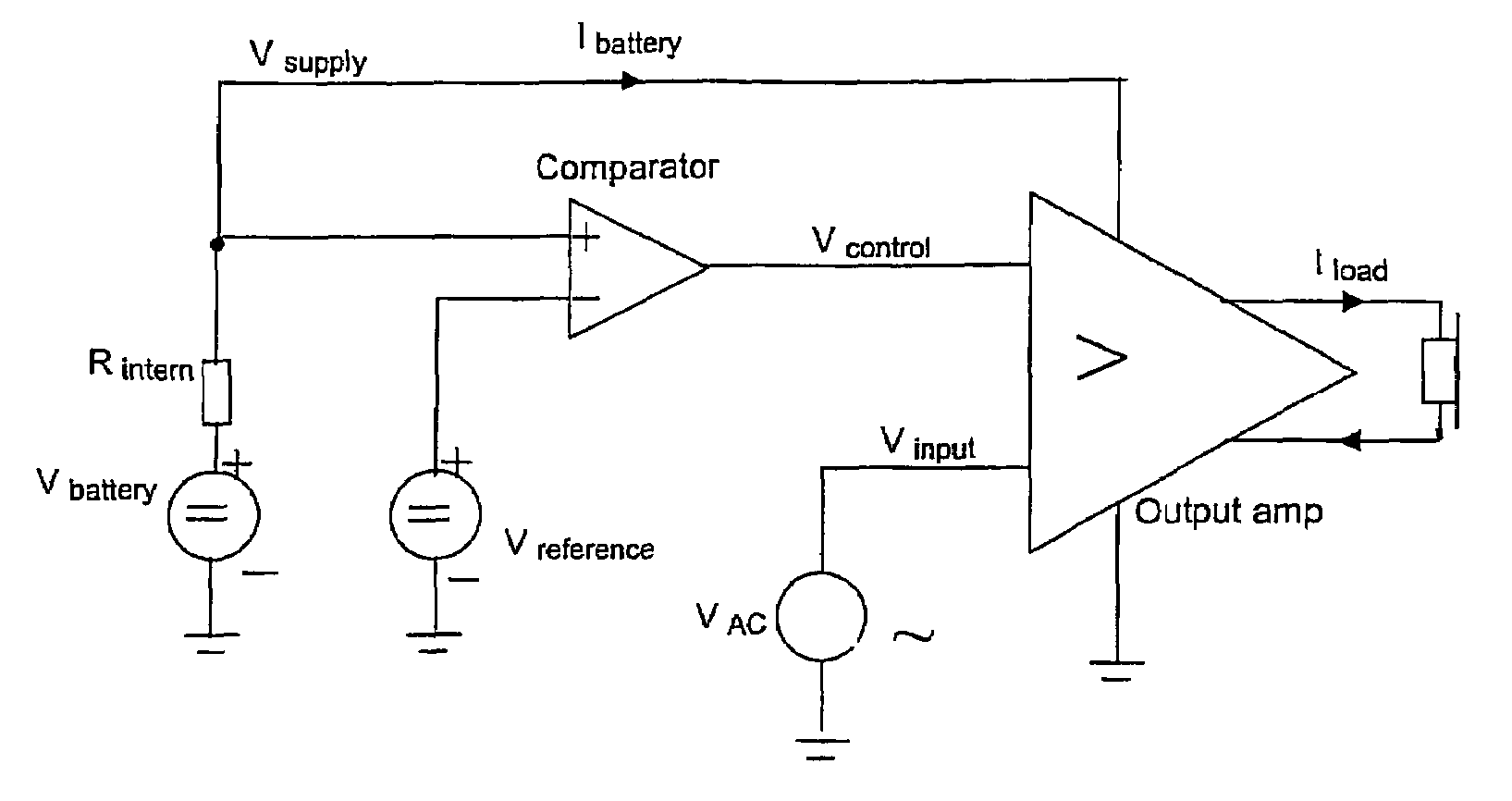Method of current management in a battery powered device and battery powered device
a battery powered device and current management technology, applied in the direction of load supply circuits, electrical appliances, electric vehicles, etc., can solve the problems of battery voltage dropping, insufficient airflow through the inlet of the battery, and increased impedance, so as to achieve small harmful side effects on the audio quality, the effect of fast current regulation
- Summary
- Abstract
- Description
- Claims
- Application Information
AI Technical Summary
Benefits of technology
Problems solved by technology
Method used
Image
Examples
Embodiment Construction
[0012]An example of a way to implement the invention is described in the following with reference to FIG. 1.
[0013]The load current Iload in the receiver is transformed to a current Ibattery taken from the battery. This current will generate a voltage loss due to the internal resistance Rintern and / or due to lack of air within the battery. If the supply voltage Vsupply goes below a reference voltage Vreference, the comparator will now change its output state thereby generating a control signal Vcontrol. This control signal Vcontrol is used to reduce the load current Iload from the output amplifier—ex. by temporarily disconnecting the load or receiver—then current taken from the battery Ibattery will decrease and Vsupply will go up above Vreference. This in turn will change the output of the comparator and return the output amplifier to normal operation.
[0014]This sequence will be repeated as many times as necessary in order to prevent Vsupply to go far below Vreference. The net resul...
PUM
 Login to View More
Login to View More Abstract
Description
Claims
Application Information
 Login to View More
Login to View More - R&D
- Intellectual Property
- Life Sciences
- Materials
- Tech Scout
- Unparalleled Data Quality
- Higher Quality Content
- 60% Fewer Hallucinations
Browse by: Latest US Patents, China's latest patents, Technical Efficacy Thesaurus, Application Domain, Technology Topic, Popular Technical Reports.
© 2025 PatSnap. All rights reserved.Legal|Privacy policy|Modern Slavery Act Transparency Statement|Sitemap|About US| Contact US: help@patsnap.com


